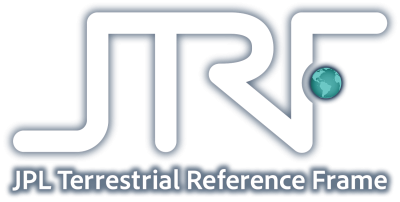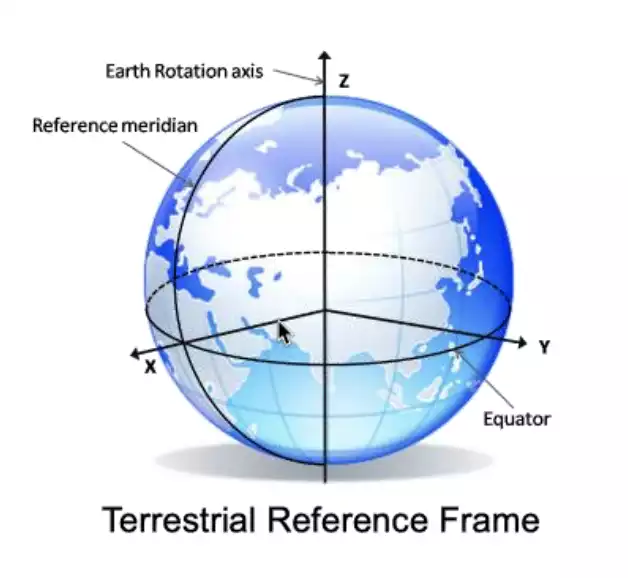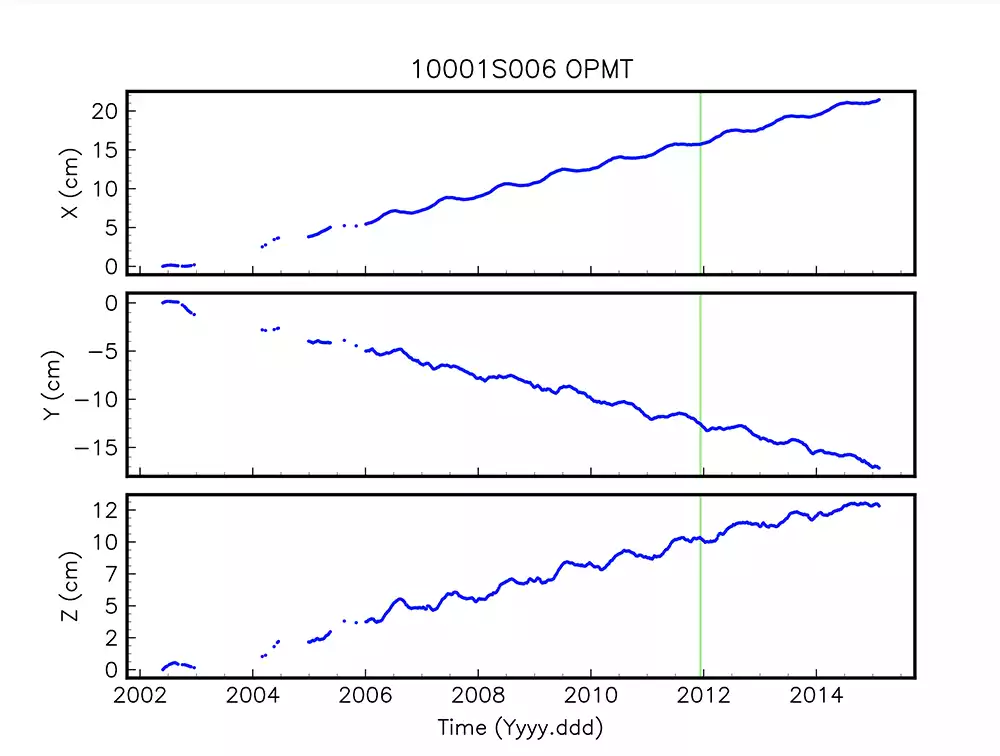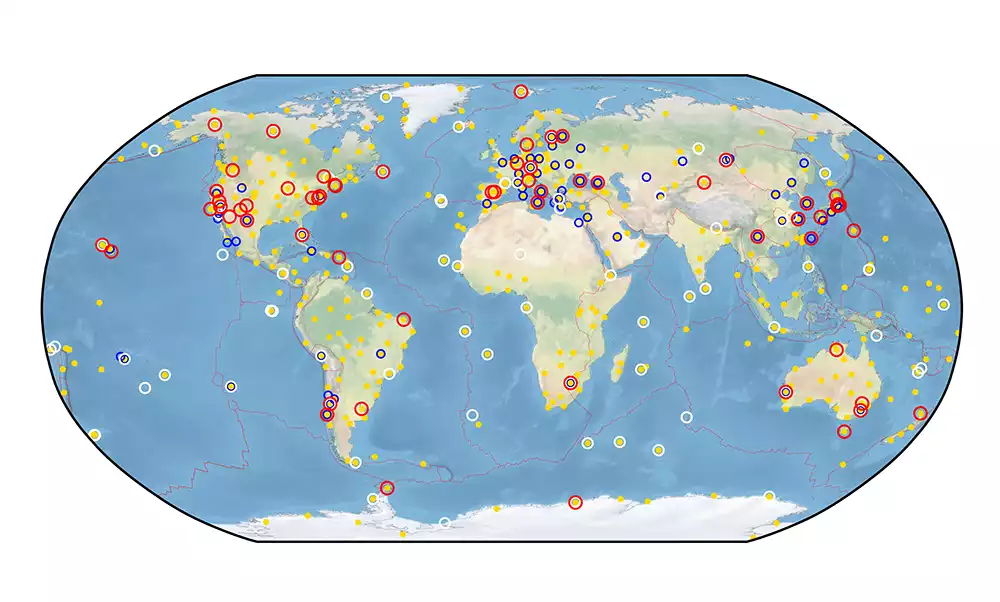
About Terrestrial Reference Frames
The Terrestrial Reference Frame (TRF) is an accurate, stable set of positions and velocities of reference points on the surface of the Earth. The TRF provides the stable coordinate system that allows us to link measurements over space and time for numerous scientific and societal applications including climate and sea level change studies. Because of the need for precision, the TRF reference points are positions of “stations” on the Earth’s surface making observations using one of four Space Geodesy Techniques:
- Doppler & Radiopositioning Integrated by Satellite (DORIS)
- Global Navigation Satellite Systems (GNSS), such as the US Global Positioning System (GPS)
- Satellite Laser Ranging (SLR)
- Very Long Baseline Interferometry (VLBI)
A Sequential Estimation Approach
In the traditional approach to determining Terrestrial Reference Frames, the Frame is the model fit to station position observations that span a fixed interval of time such as 1979-2014. Station positions at times outside the interval are based on model predictions. As actual station positions deviate from the model predictions the Frame needs to be re-determined, typically at intervals of 5-6 years.
The JPL Terrestrial Reference Frame (JTRF) approach is different. Rather than a model, the JPL Frame is represented by a set of time series of smoothed, observed station positions. A model is still fit to the observed station positions and is used to interpolate across gaps in the observations and to predict the future position of the stations. An advantage of the sequential estimation approach is that station positions and predictions can be easily updated as new geodetic observations become available.
JTRF Solutions
JTRF2020
JTRF2014
JTRF MAKES A DIFFERENCE
Who does this benefit?

Analysis Centers
Use TRFs for day to day research on satellite systems and geocenter motion.

Researchers
Use TRFs to explore dynamic changes of the Earth's surface.

Educators
Professors use TRFs to educate students and early career scientists on different aspects of geodesy.

Governments
Use TRFs to register remote images from satellites and other platforms to accurate surface maps.

Space Agencies
TRFs can assist space agencies on flight software and navigation systems.

Mapping Agencies
Use precise reference points based on frame-based geodesy.

Surveyors
Use TRFs to place their surveys within a common Frame.

General Public
TRFs help provide daily GPS navigation data accurate to 1 meter.
Latest News
JTRF2020 Coming Soon
JTRF2020, JPL’s sequentially estimated terrestrial reference frame determined from GNSS, VLBI, SLR, and DORIS station position and EOP data spanning 1979-2020, is expected to be available Spring 2022.




